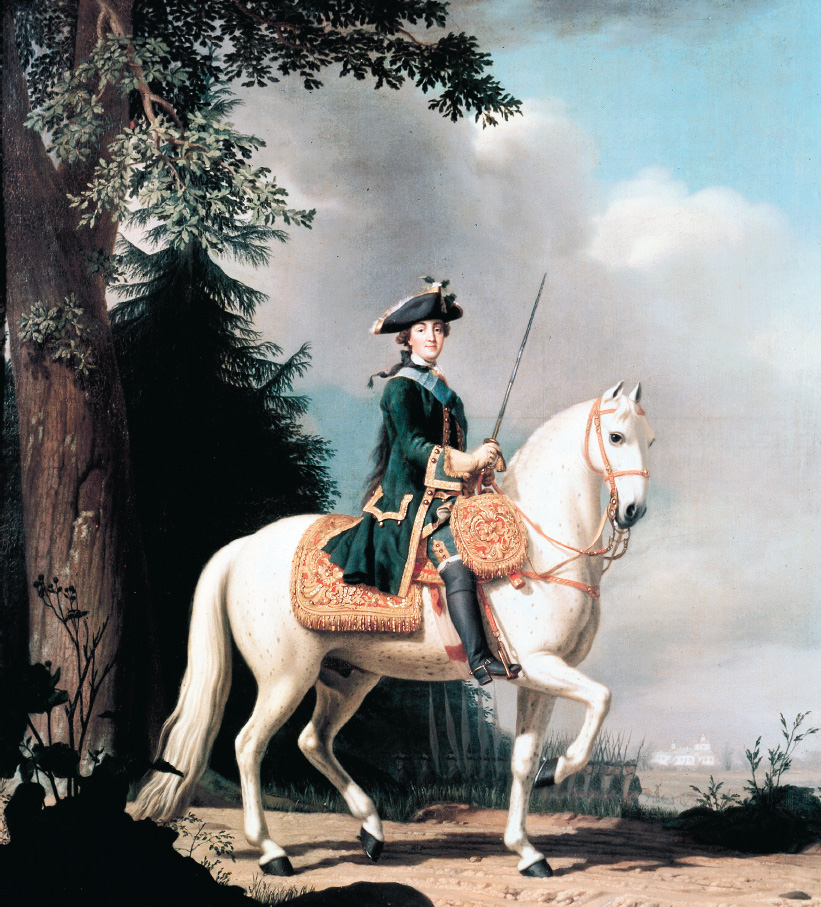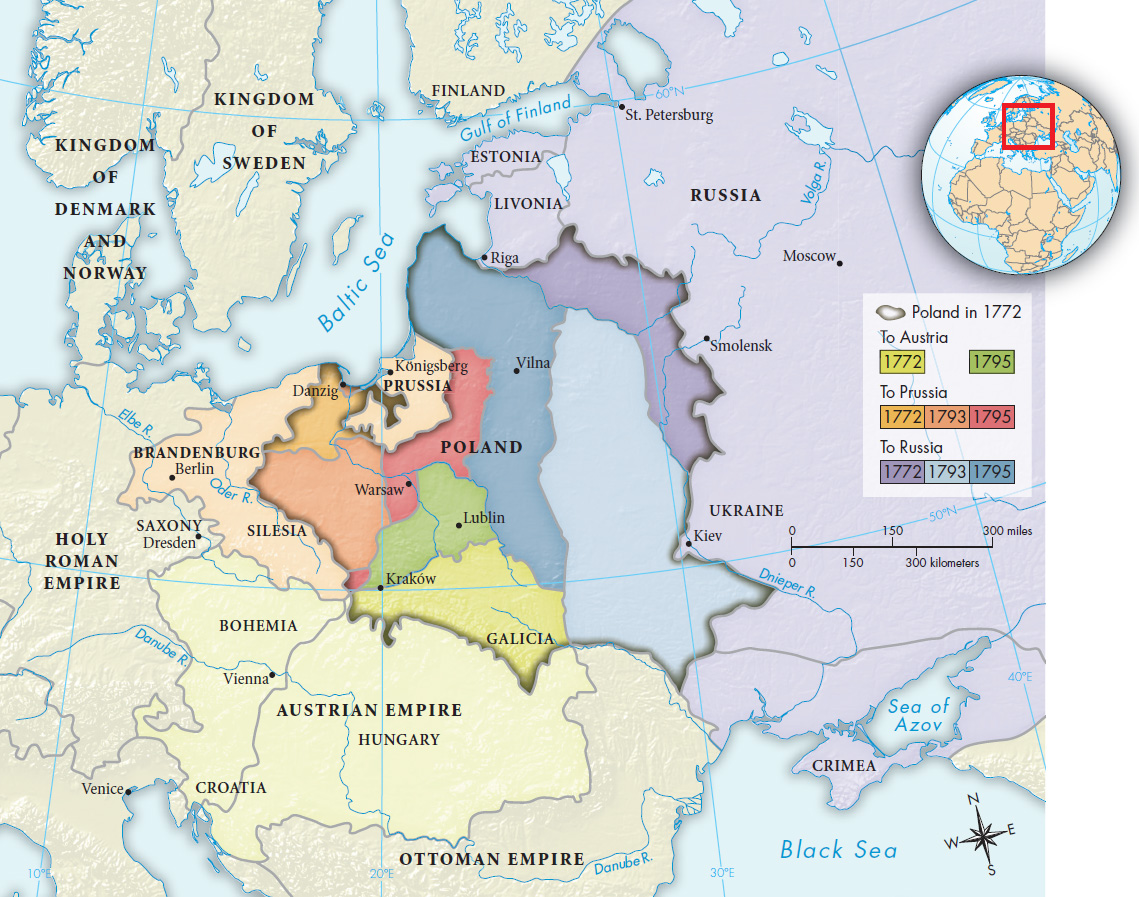Catherine the Great of Russia
Catherine the Great of Russia (r. 1762–1796) was one of the most remarkable rulers of her age, and the French philosophes adored her. Catherine was a German princess from Anhalt-Zerbst, an insignificant principality sandwiched between Prussia and Saxony. Her father commanded a regiment of the Prussian army, but her mother was related to the Romanovs of Russia, and that proved to be Catherine’s opening to power.

Catherine’s Romanov connection made her a suitable bride at the age of fifteen for the heir to the Russian throne. It was a mismatch from the beginning, but her Memoirs made her ambitions clear: “I did not care about Peter, but I did care about the crown.” When her husband, Peter III, came to power during the Seven Years’ War, his decision to withdraw Russian troops from the coalition against Prussia alienated the army. Catherine profited from his unpopularity to form a conspiracy to depose her husband. In 1762 Catherine’s lover Gregory Orlov and his three brothers, all army officers, murdered Peter, and the German princess became empress of Russia.
Catherine had drunk deeply at the Enlightenment well. Never questioning that absolute monarchy was the best form of government, she set out to rule in an enlightened manner. She had three main goals. First, she worked hard to continue Peter the Great’s effort to bring the culture of western Europe to Russia (see “The Reforms of Peter the Great” in Chapter 15). To do so, she imported Western architects, musicians, and intellectuals. She bought masterpieces of Western art and patronized the philosophes. An enthusiastic letter writer, she corresponded extensively with Voltaire and praised him as the “champion of the human race.” When the French government banned the Encyclopedia, she offered to publish it in St. Petersburg, and she sent money to Diderot when he needed it. With these actions, Catherine won good press in the West for herself and for her country. Moreover, this intellectual ruler, who wrote plays and loved good talk, set the tone for the entire Russian nobility. Peter the Great westernized Russian armies, but it was Catherine who westernized the imagination of the Russian nobility.
Catherine’s second goal was domestic reform, and she began her reign with sincere and ambitious projects. In 1767 she appointed a legislative commission to prepare a new law code. This project was never completed, but Catherine did restrict the practice of torture and allowed limited religious toleration. She also tried to improve education and strengthen local government. The philosophes applauded these measures and hoped more would follow.
Such was not the case. In 1773 a common Cossack soldier named Emelian Pugachev sparked a gigantic uprising of serfs, very much as Stenka Razin had done a century earlier (see “The Tsar and His People” in Chapter 15). Proclaiming himself the true tsar, Pugachev issued orders abolishing serfdom, taxes, and army service. Thousands joined his cause, slaughtering landlords and officials over a vast area of southwestern Russia. Pugachev’s untrained forces eventually proved no match for Catherine’s noble-led army. Betrayed by his own company, Pugachev was captured and savagely executed.
Pugachev’s rebellion put an end to any intentions Catherine had about reforming the system. The peasants were clearly dangerous, and her empire rested on the support of the nobility. After 1775 Catherine gave the nobles absolute control of their serfs, and she extended serfdom into new areas, such as Ukraine. In 1785 she freed nobles forever from taxes and state service. Under Catherine the Russian nobility attained its most exalted position, and serfdom entered its most oppressive phase.
Catherine’s third goal was territorial expansion, and in this respect she was extremely successful. Her armies subjugated the last descendants of the Mongols and the Crimean Tartars, and began the conquest of the Caucasus (KAW-kuh-suhs). Her greatest coup by far was the partition of Poland (Map 16.1). When, between 1768 and 1772, Catherine’s armies scored unprecedented victories against the Ottomans and thereby threatened to disturb the balance of power between Russia and Austria in eastern Europe, Frederick of Prussia obligingly came forward with a deal. He proposed that Turkey be let off easily and that Prussia, Austria, and Russia each compensate itself by taking a gigantic slice of the weakly ruled Polish territory. Catherine jumped at the chance. The first partition of Poland took place in 1772. Subsequent partitions in 1793 and 1795 gave away the rest of Polish territory, and the ancient republic of Poland vanished from the map.
MAPPING THE PAST

ANALYZING THE MAP Of the three powers that divided the kingdom of Poland, which gained the most territory? How did the partition affect the geographical boundaries of each state, and what was the significance? What border with the former Poland remained unchanged? Why do you think this was the case?
CONNECTIONS What does it say about European politics at the time that a country could simply cease to exist on the map? Could that happen today?